Concurrent Session 1 | May 6 | 9:30 – 11:00 AM
Session 1.1 A
NEPA | AI Unleashed: Integrating into the NEPA Process
9:30 – 10:00 AM
| About the Presentation |
|
In an era marked by rapid technological advancements, the integration of Artificial Intelligence (AI) into the realm of National Environmental Policy Act (NEPA) practice has emerged as a transformative force. This presentation delves into the effective utilization of AI for NEPA professionals, shedding light on its implementation, contextualizing its appropriate usage, and outlining potential challenges. The presentation begins by elucidating the practical application of AI in NEPA processes. AI technologies, such as machine learning and natural language processing, offer unprecedented opportunities to automate data analysis, streamline impact assessments, and enhance decision-making. The presentation will guide NEPA professionals in effectively leveraging these tools to workflow, thereby bolstering project planning and execution. While AI promises significant advantages, it is imperative to recognize its limitations. The presentation will emphasize the importance of preserving the human element in NEPA practice, especially in situations demanding ethical considerations, complex stakeholder engagement, and subjective judgment. By illustrating scenarios where AI may fall short, such as community involvement and the interpretation of intricate socio-environmental dynamics, attendees will gain a comprehensive understanding of when to prioritize human expertise over AI-driven automation.
Addressing potential drawbacks, the presentation will explore challenges associated with AI integration into NEPA processes. These challenges encompass data bias, interpretability, and the need for continuous training. Attendees will be equipped with strategies to identify and mitigate these challenges effectively, ensuring that AI remains a tool for enhancement rather than a source of unforeseen complications. In conclusion, this presentation seeks to empower NEPA professionals with a holistic perspective on AI integration. By providing actionable insights on the appropriate implementation of AI, highlighting its limitations, and addressing potential pitfalls, attendees will be better prepared to embrace AI as a valuable asset within the NEPA framework. As the landscape of NEPA practice evolves, harnessing the potential of AI is poised to drive unparalleled efficiencies.
|
| About the Speaker |
|
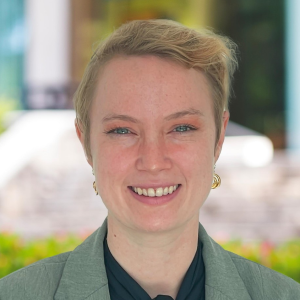 Lauren Schramm Lauren Schramm
NEPA Manager
Pond and Company
Originally from Northern Vermont, Lauren holds a bachelor’s degree from Alfred University and earned her MS from Clemson University. Lauren embarked on her career in a Texas freshwater mussel lab before relocating to Atlanta. As a project manager, she successfully led a team of scientists completing NEPA work for cell towers across 29 states. Lauren has since transitioned to working with additional lead agencies and Pond and Company, where she currently serves as the manager of a NEPA team. In her free time, Lauren manages a mini farm, indulges in painting, and hand-building ceramic art, and dedicates time to volunteering.
|
Session 1.1 B
NEPA | Using AI to Improve the Efficiency of NEPA Reviews
10:00 – 10:30 AM
| About the Presentation |
|
Generative AI has the potential to serve as a powerful tool for enhancing the efficiency and quality of NEPA reviews. This session will provide an introduction to the capabilities and benefits of applying generative AI in Environmental Impact Statements, Environmental Assessments, and Categorical Exclusions using cutting-edge real-world examples. Tactics for minimizing AI hallucinations will be discussed, and ethical and regulatory considerations will be highlighted. Rapid advances are occurring in the Artificial Intelligence field that can be applied by NEPA practitioners to speed up environmental reviews while retaining their robustness.
The objective of this session is to provide practical tips for leveraging generative AI to aid various aspects of the environmental review process.
|
| About the Speaker |
|
 Krish Vijayaraghavan Krish Vijayaraghavan
Principal
Ramboll
Krish Vijayaraghavan is a Principal at Ramboll with over 20 years of experience in environmental modeling. Krish has directed EISs and EAs under NEPA to assess and disclose impacts for power, renewable energy, conventional energy, airports, aviation, surface transportation, reclamation, mining, and other natural resource projects with agency stakeholders from BLM, FAA, USACE, NHTSA, OSMRE, BOR, FRA, USAF, BOEM, NPS, USFWS and other agencies. His technical areas of expertise are computer modeling and air quality and greenhouse gas/climate change analysis. Krish has published over 40 peer-reviewed papers in scientific journals and co-authored two technical books.
|
Session 1.1 C
NEPA | Artificial Intelligence/Machine Learning Approaches to Improve Permitting Outcomes and Efficiency
10:30 – 11:00 AM
| About the Presentation |
|
Artificial intelligence (AI) has great potential to play a larger role in improving and streamlining environmental and permitting reviews. AI can improve accessibility and organization of information contained in past environmental review documents. To this end, we constructed an AI-ready vector database with Department of Energy NEPA documents and use the Retrieval-Augmented Generation (RAG) technique to fuse the retrieved information with the given user query and build a Large Language Model (LLM) based conversation assistant to accelerate the retrieval and use of environmental information used in the environmental permitting process. There are different opportunities when developing a NEPA document to review and assess information from other reviews or available sources specific to an environmental resource. An AI approach for targeting these areas is the focus of this presentation. The development of these AI tools was tested using different NEPA analysis requirements and review scenarios and are discussed in two parts: (1) descriptions of tools development, (2) NEPA analyses test scenarios, outcomes, and next steps. The methodology and lessons learned from this study will be applicable to a variety of Federal, State, and local permitting and siting contexts.
|
| About the Speaker |
|

Sai Munikoti, PhD
Data Scientist
Pacific Northwest National Laboratory
Dr. Munikoti is a research data scientist at the Pacific Northwest National Laboratory focusing on artificial intelligence and machine learning. His work primarily involves the development and application of large language models. He also works on ensuring trust in AI models via uncertainty quantification framework. His current project involves developing the generative AI capability for streamlining and improving environmental review process and renewable siting operations. He possesses publications in multiple journals and conference proceedings, including AAAI and KDD Scholar. Sai received his Ph.D. in Electrical and Computer Engineering from Kansas State University in Summer, 2022. In addition to his doctorate, Sai also holds an MS and BE degree from India..
|
Back to Top
Session 1.2 A
Biological Resources | Re-creating Hall's Island: Balancing Ecology with Engineering
9:30 – 10:00 AM
| About the Presentation |
|
In 2010, the Minneapolis Park and Recreation Board (MPRB) purchased an 11.4-acre parcel of land formerly owned by a lumber company with the intent to develop a portion of it into parkland as part of a 20-year urban design vision for development of riverfront parks along the Mississippi River. The first phase of site development centered on re-creating Hall's Island, an island that survey drawings show existed in the Mississippi River as early as 1895. In 1965, the USACE issued a permit authorizing the lumber company to remove most of Hall's Island and use it as fill to expand its operations; the island was dredged and deposited to expand the mainland in 1966. Re-creation of Hall's Island in 2018 established new habitat within the Mississippi River channel in a portion of the north/northeast Minneapolis urban environment that is dominated by industrial uses with limited access to natural areas.
Primary goals for the re-creation of Hall's Island were to improve biodiversity, create a softer and more accessible connection to the river, and provide migratory stopover habitat for birds in the Minneapolis urban core. Project development had to balance maintaining ecological focus with response actions to address soil contamination resulting from historic industrial use. In addition to the challenges of designing an island that would stay in place in a dynamic, major river system, design also needed to mitigate negative effects on recreational navigation in the river while resulting in "no rise" flood conditions, maintaining sediment transport, and minimizing potential for scour at an adjacent bridge. Island construction was complete in summer 2018, fulfilling the ecological objectives of the Hall's Island re-construction phase. Construction of the adjacent riverside park began in August 2023 to develop local recreational amenities and trail connections, provide greater access to the river, and expand upon the creation of naturalized areas for habitat.
This session will discuss:
- The ecological objectives and unique construction elements of the Hall's Island re-construction project, as well as permitting nuances that required an act of legislature to allow the vision to be fulfilled
- How this project contributes to the MPRB's long-term vision for more Mississippi River-focused green space in Minneapolis
|
| About the Speaker |
|
 Shanna Braun Shanna Braun
Vice President/Senior Environmental Scientist
Barr Engineering Co
Shanna has 18 years of environmental consulting experience, with a specific focus on environmental review requirements under federal and state-equivalent processes. She assists with environmental impact assessments and facilitates the environmental approval process for projects related to natural resources, energy transmission, flood management, municipal services, alternative energy, mining, transportation, and telecommunications. She is specialized in navigating the National Environmental Policy Act (NEPA) process for numerous federal agencies. Shanna’s work focuses on the Midwest and Intermountain West, where she leads multidisciplinary teams on EIS and EA projects.
|
Session 1.2 B
Biological Resources | Making a Wetland Out of a Molehill: The Lawson's Canal Restoration Story - CANCELED
10:00 – 10:30 AM
| About the Presentation |
|
What seemed like an innocuous activity by the City of Beaumont, Texas (City) in response to natural disasters that the City endured in the early 2000s turned into a mountain of problems with the U.S. Army Corps of Engineers (USACE). After a need for emergency equipment staging presented itself during floods associated with tropical storms, such as Hurricane Rita in 2005, fill material was placed in a defunct segment of Lawson's Canal that the City was no longer using for water supply conveyance. Subsequently, the USACE issued the City a violation for the placement of fill material in the waters of the U.S. (WOTUS). Attempts by the City and Freese and Nichols, Inc. (FNI) to resolve the violation through appealing the jurisdictional status of the canal as well as seeking an After-the-Fact Permit for the fill placement were unsuccessful and ultimately the City determined other areas were preferable for emergency staging. A new plan was formulated to restore the site to a wetland similar to its historical (pre-canal) conditions and a Nationwide Permit (NWP) 27 was sought through the USACE. Functional assessments and 1/10th acre tree plots were utilized to develop performance criteria for the permit conditions. After permit acquisition, fill material was removed and the site was graded to the contours agreed upon by the USACE. In November 2022, the site was planted with native trees that mimicked both species diversity and densities of adjacent forested wetlands. In accordance with permit conditions, compliance monitoring (for a period of ten years) has begun to track site progress and influence any adaptive management measures that may be required; FNI is managing this effort and utilizing GPS and GIS technology to streamline data management. Despite early frustrations with regulatory hurdles and limitations, the City now views the project positively as it has resulted in ecological benefits and an enhanced landscape. The project history is also being broadcast to the citizens of Beaumont via the City's website via ArcGIS Story Maps.
This presentation will highlight:
- The project history, the steps taken to develop the restoration plan, and the tools being utilized to monitor the site's progress and provide public outreach
- The Lawson's Canal Restoration Project history, the steps taken to develop the restoration plan, and the tools being utilized to monitor the site's progress and provide public outreach
|
| About the Speaker |
|

Freese and Nichols, Inc.
Speaker information coming soon.
|
Session 1.2 C
Biological Resources | Fish Barrier No More! A Washington State Case Study
10:30 – 11:00 AM
| About the Presentation |
|
Fish are a critical part of life in the Northwest. They feed tribes, generate economic benefits, and are a cornerstone of the environmental health in the region. When the migration of both Chinook salmon and steelhead on Cedar Creek was blocked by a structurally degraded concrete box culvert located under NE 100th Avenue in Kirkland, Washington, Stantec was eager to work with the City of Kirkland, Washington State Department of Transportation (WSDOT), and the Suquamish and Muckleshoot Tribes to design a solution that was in compliance with the federal culvert injunction and met the new, updated specifications for fish passage design. With the original 36-inch culvert not allowing fish passage, upstream storm detention was outdated and did not provide adequate flow control, and downstream the channel was undermined from high flows, our team knew that finding a design solution that worked would require collaboration and creative engineering. To fully understand the stream condition, our team met with WSDOT hydraulic leadership to incorporate all of the requirements of the injunction and fish passage into the design, but also to obtain construction permits with the US Army Corps of Engineers (USACE) quickly. As the culvert replacement needed to interface with the concurrent 100th Avenue NE road replacement project, the evaluation of design alternatives with WSDOT was crucial to reach the most successful solution that included minimizing traffic impacts, liquefaction and slope stability issues, existing utilities, permitting, and cost. Environmental baseline conditions reconnaissance of the project area to identify and record current critical area features, along with a wetland and stream delineations. The team used this information for completion of environmental permitting and aspects of project design, including mitigation and habitat restoration measures. The new culvert is a larger concrete, 4-sided box-style culvert to convey Cedar Creek. The channel design through the new culvert is a roughened channel design at minimum length to meet Washington Department of Fish and Wildlife (WDFW) fish passage design requirements. With downstream bank erosion, flooding issues, and a degraded aquatic habitat, the design also restored the channel with off-channel wetlands, and at the request of the tribes, 164 pieces of woody material, highlighted by 42 prominent wood pieces. After a design was selected, we performed culvert structural design, hydraulic design, stream restoration, and fish passage design, re-vegetation plan development, permitting, construction services, and community outreach. With construction completed, the culvert is now a fully functioning element of the landscape, allowing fish and people to pass through and over to their destinations.
|
| About the Speakers |
|
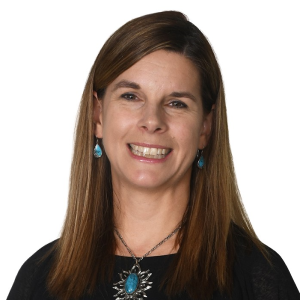 Kacy Hillman, M.S., PWS Kacy Hillman, M.S., PWS
Senior Associate Environmental Scientist
Stantec
Kacy is a certified Professional Wetland Scientist (PWS) with 18 years of field experience delineating wetlands, completing wetland functional assessments, and permitting for potential wetland impacts. She Kacy has led wetland delineations from 1 million acres to under an acre using a variety of field methods approved by the United States Army Corps of Engineers (USACE) and Ecology. She has experience working closely with the USACE and Ecology on environmental mitigation and permitting efforts and has been successful in working through complex land management issues to avoid potential project delays. Through her experience, Kacy has intimate knowledge of NEPA and the environmental permitting process.
|
|
 Tim Nightengale, M.S., CESCL Tim Nightengale, M.S., CESCL
Senior Biologist
Stantec
Tim has 25 years of experience in aquatic ecology, focusing on fish and fishery resources in waterways across the US. He has been involved in stream biomonitoring using benthic macroinvertebrates to assess the impact of human disturbances on aquatic communities and habitats. He helped design stream and wetland restoration and mitigation plans for critical and sensitive areas. Tim also coordinated environmental licensing and permitting needs, FERC licensing study plans and reports, and mitigation plans, and conducted the supporting environmental field investigations, including critical area assessments and wetland delineations. His work has served clients from local and state government, federal agencies, Tribes, industrial clients, Conservation and Irrigation Districts, and non-profits.
|
Session 1.3 A
Environmental Justice | Bridging the Digital Divide: Matching Community Needs with Federal Funding
9:30 – 10:00 PM
| About the Presentation |
|
Advancing equality has been identified as a key goal of the Biden administration and is a commonly named goal for public sector organizations at every level. In our post-pandemic world, we are now more aware than ever how valuable connection through internet access is for all aspects of our modern society. The need to close the gap between those with and without reliable internet access is demonstrated in the Digital Equity Act, established in 2021 by the Bipartisan Infrastructure Law (also referred to as the Infrastructure Investment and Jobs Act). But what is "Digital Equity" and how can environmental practitioners support it? This presentation will review recent and current legislation and funding actions related to digital equity, identify the federal agencies and administrative players in the system of allocating funds, review case studies of different applications of digital equity projects across the U.S., outline themes regarding the challenges of enacting digital equity in the future, and consider ideas for streamlining the process from funding application submittal to home internet user. This presentation will also explore digital equity's reliance on critical minerals, power generation and distribution, and physical infrastructure, placing the topic at the center of contemporary and emerging environmental practice.
Objectives:
- Understand where to reference legislation regarding digital equity
- Identify multiple applications of the concept of "digital equity"
- Identify local, state, and private stakeholders in the pursuit of digital equity projects
|
| About the Speaker |
|
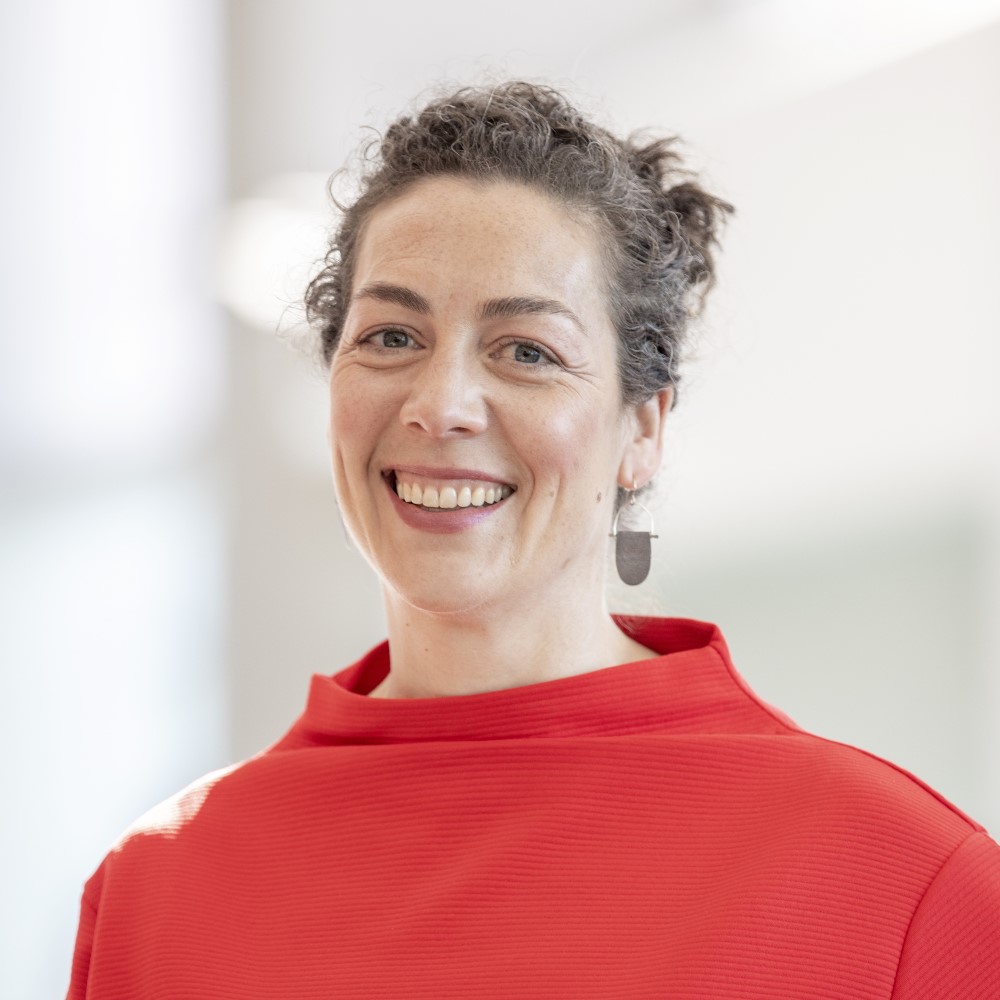 Anna Kohl, CEP Anna Kohl, CEP
Senior Environmental Project Manager
HDR, Inc.
As a Senior Environmental Project Manager at HDR in Alaska, Anna's work focuses on program-level environmental planning and NEPA compliance for infrastructure development projects. She is actively engaged in all technical discipline aspects pertinent to the NEPA process, as well as with agency and stakeholder coordination and communication. Active in NAEP, the Alaska NAEP Chapter, and as a Trustee for the Academy of Board Certified Environmental Professionals (ABCEP), Anna is committed to advancing the environmental practice through collaborative learning opportunities with colleagues. Anna has worked with public- and private-sector clients in Alaska for 23 years.
|
Session 1.3 B
Environmental Justice | Engaging Environmental Justice Communities Beyond the Census
10:00 – 10:30 AM
| About the Presentation |
|
The Regional Transportation District (RTD) that serves the Denver Metro area conducted a Planning and Environmental Study for the feasibility of a Northwest Rail Peak Service commuter rail from Longmont, Colorado to Denver, Colorado. The Northwest Rail Peak Service would provide additional transit service to six communities along the Front Range of Colorado, increasing access and connectivity between cities. In the development of the project, a specific Northwest Rail Peak Service Study Engagement Team was developed to focus solely on the outreach to environmental justice communities. The alignment of the commuter rail runs through environmental justice communities and the engagement team has made immense efforts to ensure these communities are involved in the project and the decision-making process. The meaningful engagement of communities with environmental justice concerns, including, but not limited to minority, low-income, limited English proficiency (LEP) communities, households without access to a personal vehicle, and people with disabilities, has been a core component integrated throughout the project process. The team developed an extensive Public Outreach Plan integrated with the equity analysis to capture voices from oftentimes, underrepresented communities. The project team adopted a mantra of out-of-the-box thinking to develop activities that would engage individuals and encourage them to share challenges and opportunities that should be addressed throughout the project.
- Pop Up Events: The team attended existing community events to share project information and gather feedback via an interactive activity. Events with cultural relevancy were identified to ensure audiences beyond the typical public forum attendee were engaged.
- Public Open House: The traditional public house format was used, but with additional thought and accommodations for underserved community members. Time of day, location, translation services, childcare, and accessibility were factored into the implementation of these events.
- EJ Survey: A survey was developed and distributed to Community-Based Organizations to capture information about the communities beyond the data available from the U.S. Census including immigrant communities, unhoused populations, community-supporting resources, and areas with high number of minority-owned and serving businesses.
- Impacts & Benefits Workshop: A workshop to discuss the potential impacts and benefits of the project and proposed service was held with attendance from stakeholders.
This session would discuss:
- The analysis to identify these environmental justice communities in accordance with recent executive orders and Title VI
- The inventive ways the community was engaged, the feedback from the communities on the engagement process
- How this engagement was incorporated into the project
- Challenges and lessons learned throughout the engagement process
|
| About the Speakers |
|
 Mike Washington Mike Washington
Equity Consultant
HDR, Inc.
Mike Washington supports HDR’s National Equity Services program and is a national lead in our Transportation Business Group Equity Services team. Mike is an equity and government affairs expert who brings a wealth of knowledge in equitable transportation policy, government relations, environmental justice, public engagement, and communication strategies. Mike brings over 15 years of urban planning and policy experience with an emphasis in equitable transportation planning. He is also adept at coaching executive-level management seeking socially equitable outcomes, recognized as a civil rights expert, and experienced in engaging elected officials and CEOs.
|
|
 Sabrina Meadows Sabrina Meadows
Environmental Planner
HDR, Inc.
Sabrina is an Environmental Planner specializing in the development of NEPA documents and other transportation projects. Her background includes calculating environmental impacts using GIS and other methods, supporting the analysis and documentation of various resource areas, supporting public involvement efforts, and developing client-facing documents. Sabrina is a deputy project manager for a variety of transportation projects in Colorado that focus on socio-economic challenges. She has been a part of the formation of the Environmental Justice and Equity business group that is in the Denver HDR office and has a passion for ensuring all people are appropriately included in the decision-making process.
|
Back to Top
Session 1.4 A
Transportation | Demystifying Federal Railroad Administration's (FRA's) Environmental Risk and Project Readiness Grant Review
9:30 – 10:00 AM
| About the Presentation |
|
In 2021, the Infrastructure Investment and Jobs Act (IIJA) or Bipartisan Infrastructure Bill (BIL) was signed into law, making billions of dollars in funding available to FRA for competitive discretionary grant program opportunities to enhance the nation's rail network. In assessing grant applications, FRA makes preliminary determinations of the environmental and Section 106 risk and project readiness for grant award. This clarifying presentation will provide an overview of FRA's grant programs. The presentation will give the audience insight on FRA grant programs and environmental review. FRA will discuss in detail Environmental/Section 106 risk assessment, as well as other factors that may be considered during grant review. Information that should be included in the Environmental Readiness section of grant applications will be described and discussed.
|
| About the Moderator |
|
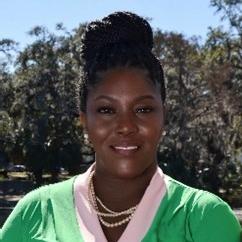 Geri Robinson, JD, MPH Geri Robinson, JD, MPH
Environmental Justice Lead
Federal Railroad Administration
Geri Robinson is the Federal Railroad Administration’s Environmental Justice Lead and a member of the Environmental Policy Division in the Office of Environmental Program Management. Geri has over 17 years of federal experience, between FRA, the U.S. Coast Guard, and the U.S. Army Corps of Engineers. Her expertise is in environmental compliance and policy, environmental justice and equity, planning, construction, project and emergency management, waterways, navigation, disaster response, and federal grant review. Geri has an additional nine years of combined legal experience as former Director of Community Outreach at Tulane University School of Law’s Environmental Law Clinic and as an appellate judicial law clerk with the Fourth Circuit Court of Appeal, State of Louisiana. Geri holds a Bachelor of Science degree in Biology from Dillard University, a Master of Public Health degree from Tulane University, and the degree of Juris Doctor from Loyola University New Orleans College of Law.
|
|
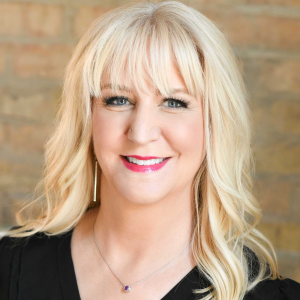 Kristen Zschomler Kristen Zschomler
Acting Supervisor and Environmental Protection Specialist
Federal Railroad Administration - U.S. Department of Transportation
Kristen Zschomler is the Acting Supervisor, Cultural Resources Division and Environmental Protection Specialist - Cultural Resource Division - Major Projects Team, Office of Environmental Program Management at the U.S. Department of Transportation. Kristen is a historian, architectural historian, and archaeologist with over 30-years’ experience conducting Section 106 reviews on complex transportation projects across the United States for a variety of agencies, including FRA, FHWA, FTA, and FAA.
|
Session 1.4 B
Transportation | How to Eat an Elephant? FRA Bites into the BIL
10:00 – 10:30 AM
| About the Presentation |
|
In 2021, the Infrastructure Investment and Jobs Act (IIJA) or Bipartisan Infrastructure Bill (BIL) was signed into law. It includes around $550 billion in new federal investment in America's roads and bridges, water infrastructure, resilience, internet, and more. For the Federal Railroad Administration (FRA), it is the largest federal investment in passenger rail since the creation of Amtrak and the largest investment in clean energy transmission and EV infrastructure in history.
The BIL greatly expanded existing FRA programs and created new programs and competitive discretionary grant program opportunities. To deliver railroad projects more efficiently in support of the goals of the BIL and meet the challenges brought on by a dramatic influx of rail projects requiring NEPA environmental review, FRA has developed tools and guidance to assist grantees.
The key aspects to be examined in this session include the following:
- Implications for FRA Programs from the Bipartisan Infrastructure Law or BIL
- Overview of FRA discretionary grant programs
-
FRA’s guidance, resources and tools, and key focus areas
-
A key focus area for FRA concerns locally sponsored projects
-
Opportunities for Cross-Agency Understanding, Coordination, and Cooperation
|
| About the Speaker |
|
 Carmen M. Stemen, MUP Carmen M. Stemen, MUP
Environmental Protection Specialist
Federal Railroad Administration, Office of Environmental Program Management, Policy Division
Carmen is an Environmental Protection Specialist with the FRA NEPA Policy Team. She began her career with the Ohio Department of Transportation as a transportation planner focused on statewide multimodal and metropolitan planning processes. She then served as a Major Projects Coordinator, overseeing the NEPA review process for major highway investment and ARRA rail projects. In FHWA's Ohio Division, she served concurrently as environmental program manager and senior community planner. She oversaw the NEPA review process for major highway projects and led the first NEPA Assignment Review Team as well as establishing a relationship and protocols for tribal consultation. Carmen has a BA from The Ohio State University and a master's degree in urban planning from the University of Michigan.
|
Session 1.4 C
Transportation | The Corridor Identification Program FRA's Approach to Efficiencies in Planning and NEPA
10:30 – 11:00 AM
| About the Presentation |
|
There is no Federal statutory requirement for a State to prepare and maintain a State Rail Plan to serve as the basis for Federal and State rail investments within the State. Moreover, rail projects are not required to be included in State Rail Plans to be eligible for Federal funding under most competitive discretionary grant programs. Proposed rail projects that have not been developed through a robust planning process, involving agency coordination and meaningful public engagement, may face challenges and delays when undergoing the National Environmental Policy Act (NEPA) environmental review process.
The Infrastructure Investment and Jobs Act (IIJA), also known as the Bipartisan Infrastructure Law (BIL), established the Corridor Identification and Development (CID) Program to facilitate the development of intercity passenger rail corridors. Through the CID Program, FRA will partner with, and provide financial assistance to, corridor sponsors to prepare, or update, a Service Development Plan to create a prioritized "pipeline" of projects that are eligible for funding under FRA's financial assistance programs. Projects included in the Project Pipeline will receive priority funding under the Federal-State Partnership for Intercity Passenger Rail Grant Program.
Under its new CID Program approach, railroad corridor sponsors will conduct transportation and environmental planning with agency coordination and public engagement in a manner to develop a draft project purpose and need statement and perform preliminary alternatives analysis that would be further refined through the NEPA process. This approach, which integrates the consideration of environmental factors into the planning process, creates efficiencies in the project development process by allowing a project sponsor to avoid duplicative efforts in planning and NEPA, taking planning information and key decisions into the NEPA process.
In this presentation, FRA will:
- Provide an overview of its CID Program
- Discuss its approach to integrating the planning and environmental review processes
- Present guidance and resources to assist project proponents in implementing this approach
|
| About the Speakers |
|
 Lana Lau Lana Lau
Supervisory Environmental Protection Specialist
Federal Railroad Administration
Lana leads the Federal Railroad Administration's National Environmental Policy Act Policy Team. The team develops NEPA policy and guidance and provides environmental compliance subject matter expertise and technical support to FRA program offices and grantees. Prior to joining FRA, she spent 13 years with the Federal Highway Administration where she prepared NEPA documents, obtained environmental permits for projects of all levels of complexity, and lead program areas including Planning and Environment Linkages and the Every Day Counts-5 Virtual Public Involvement team.
|
|
 Anthony (Tony) Lee Anthony (Tony) Lee
Community Planner
Federal Railroad Administration
Tony Lee has over 25 years of transportation and NEPA experience, mostly as a consultant and with FTA and FRA. He currently serves as a planning lead for several service development plans for inter-city passenger rail in FRA’s Office of Planning and Engineering. As a former NEPA practitioner for most of his career, Tony is thrilled to discuss the FRA Corridor Identification and Development Program’s planning process.
|
Back to Schedule
|